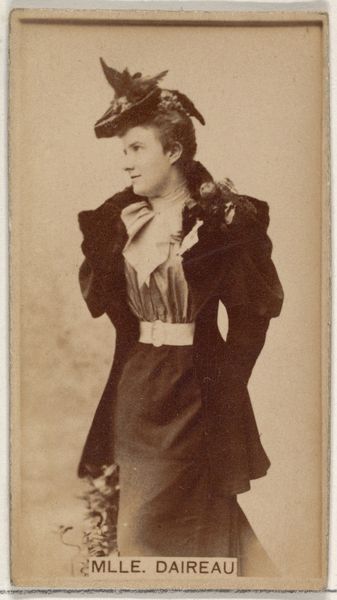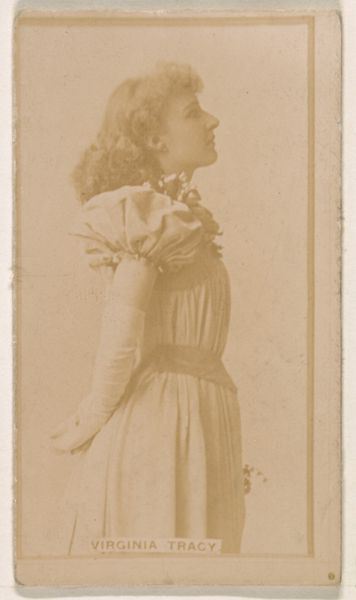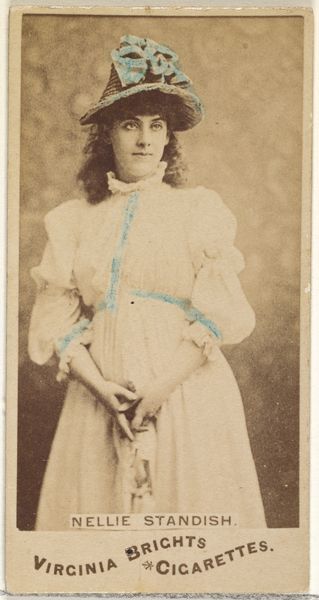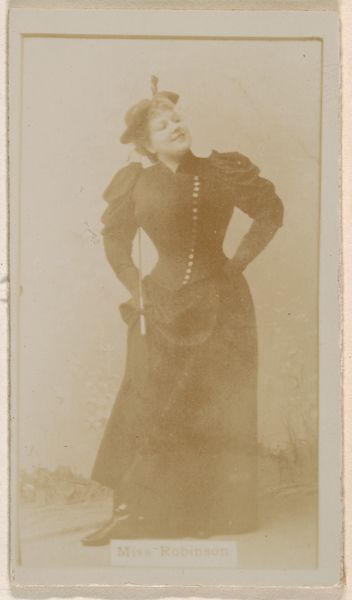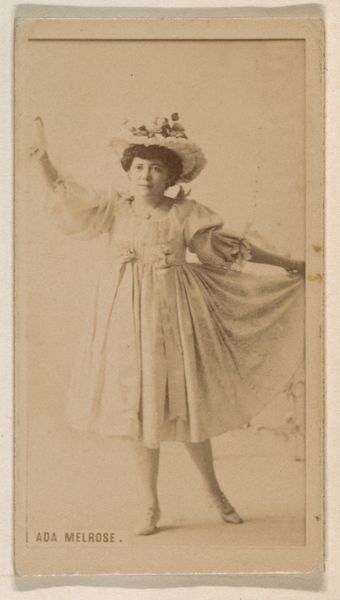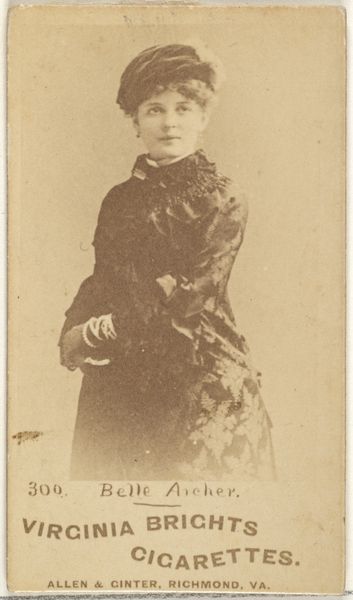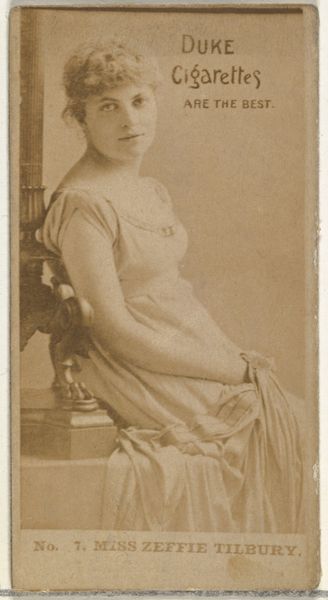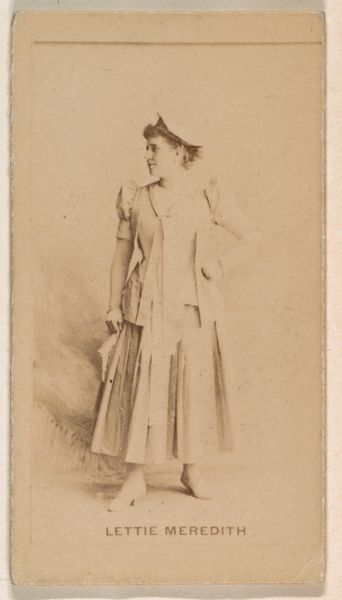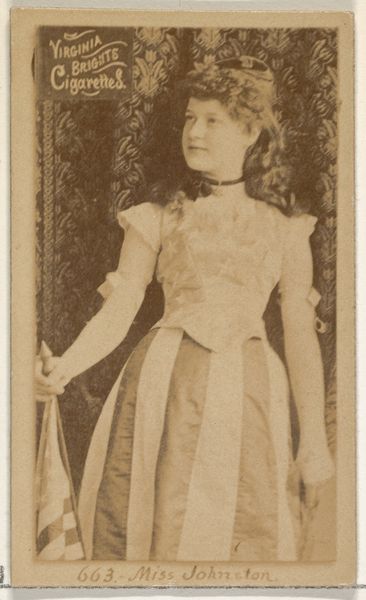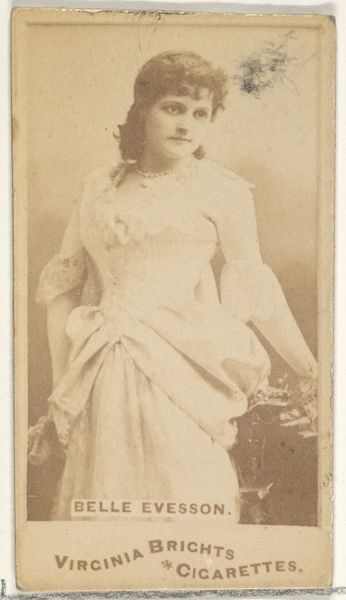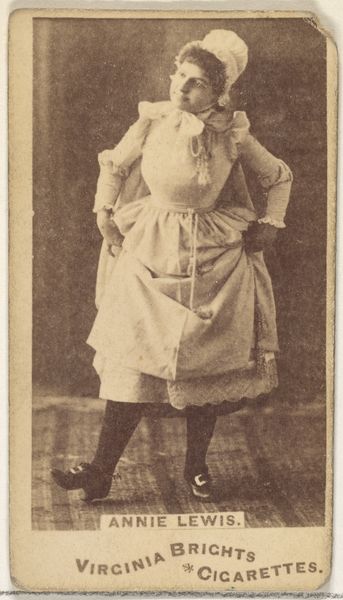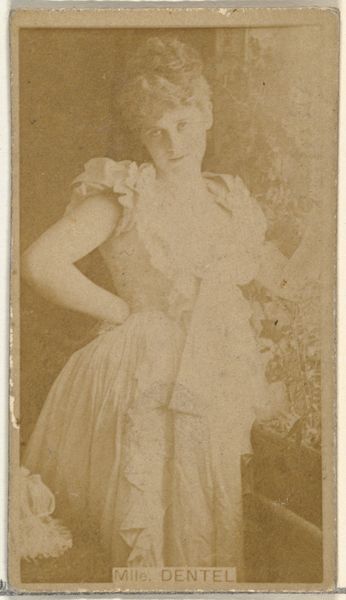
Madge Bannister, from the Actors and Actresses series (N45, Type 1) for Virginia Brights Cigarettes 1885 - 1891
0:00
0:00
drawing, print, photography
#
portrait
#
drawing
# print
#
photography
Dimensions: Sheet: 2 3/4 x 1 3/8 in. (7 x 3.5 cm)
Copyright: Public Domain
Editor: Here we have a photograph, almost sepia-toned, from between 1885 and 1891, showcasing Madge Bannister. It's from the "Actors and Actresses" series for Virginia Brights Cigarettes, created by Allen & Ginter. There’s a wistful, almost dreamlike quality to it, and I’m struck by how staged the portrait seems, despite the intimate gaze. What symbolic layers do you see within this piece, especially considering its original commercial context? Curator: Ah, an excellent question. These trade cards, common then, served not only as advertisements but also as cultural artifacts, reflecting the values and aspirations of the era. Bannister’s gaze, averted yet confident, hints at the emerging role of women in the public sphere. Her adornments suggest not just individual beauty, but the societal performance expected of actresses, mirroring the packaging of the cigarette brand as itself a sort of performance. Editor: So, it's more than just a pretty face selling cigarettes. What about the choice of actors and actresses? What does that signify? Curator: Precisely! Actors and actresses were becoming icons. By associating them with a product, advertisers tapped into a cultural wellspring of admiration and aspiration. Do you notice the symbolism in her dress—the high collar and severe, dark cuffs? It speaks of both modesty and controlled passion—the same emotional dexterity one might find mirrored in the audience members that purchased her cards with cigarettes. Editor: It’s fascinating how much a simple cigarette card can tell us about the period. Thank you! I see it with new eyes. Curator: Indeed! Each element, consciously or unconsciously, contributed to a potent cultural narrative of both the performer and the era’s hidden emotional complexities.
Comments
No comments
Be the first to comment and join the conversation on the ultimate creative platform.
